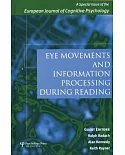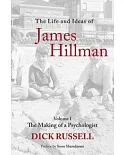你認知的,不一定是真的!
《為什麼我們這樣生活,那樣工作?》與《快思慢想》的生活實踐版
很久很久以前,人們就認為毛躁、不專心和無知是成功的最大敵人。而自律則是被高度認可的美德,尤其在學習、記憶或準備測驗時,關掉音樂、停止玩樂絕對是應該的。
但是,假如這些認知都是錯誤的呢?或許,有另一條事半功倍的捷徑不小心被成見遮蔽了呢?
紐約時報資深科學記者Benedict Carey在本書中援引數十年來的教育相關文獻與研究成果,揭露人類大腦吸收學習、儲存知識的真實面貌。他發現在呱呱墜地後,人類都是快速、主動而且積極地學習,但是之後在系統化這些知識時,往往遺漏了一些學習的關鍵工具,像是遺忘、睡眠與做白日夢。
在寧靜的房間裡擺一張桌子就是最好的讀書場所?改變日常習慣能刺激記憶?人類大腦的構造與運作比肌肉複雜千萬倍,Carey將告訴你如何妥善運用它來提升學習效率,也讓生活更愜意愉快!
In the tradition of The Power of Habit and Thinking, Fast and Slow comes a practical, playful, and endlessly fascinating guide to what we really know about learning and memory today—and how
we can apply it to our own lives.
From an early age, it is drilled into our heads: Restlessness, distraction, and ignorance are the enemies of success. We’re told that learning is all self-discipline, that we must confine
ourselves to designated study areas, turn off the music, and maintain a strict ritual if we want to ace that test, memorize that presentation, or nail that piano recital.
But what if almost everything we were told about learning is wrong? And what if there was a way to achieve more with less effort?
In How We Learn, award-winning science reporter Benedict Carey sifts through decades of education research and landmark studies to uncover the truth about how our brains absorb and retain
information. What he discovers is that, from the moment we are born, we are all learning quickly, efficiently, and automatically; but in our zeal to systematize the process we have ignored
valuable, naturally enjoyable learning tools like forgetting, sleeping, and daydreaming. Is a dedicated desk in a quiet room really the best way to study? Can altering your routine improve your
recall? Are there times when distraction is good? Is repetition necessary? Carey’s search for answers to these questions yields a wealth of strategies that make learning more a part of our
everyday lives—and less of a chore.
By road testing many of the counterintuitive techniques described in this book, Carey shows how we can flex the neural muscles that make deep learning possible. Along the way he reveals why
teachers should give final exams on the first day of class, why it’s wise to interleave subjects and concepts when learning any new skill, and when it’s smarter to stay up late prepping for
that presentation than to rise early for one last cram session. And if this requires some suspension of disbelief, that’s because the research defies what we’ve been told, throughout our lives,
about how best to learn.
The brain is not like a muscle, at least not in any straightforward sense. It is something else altogether, sensitive to mood, to timing, to circadian rhythms, as well as to location and
environment. It doesn’t take orders well, to put it mildly. If the brain is a learning machine, then it is an eccentric one. In How We Learn, Benedict Carey shows us how to exploit its quirks
to our advantage.





















